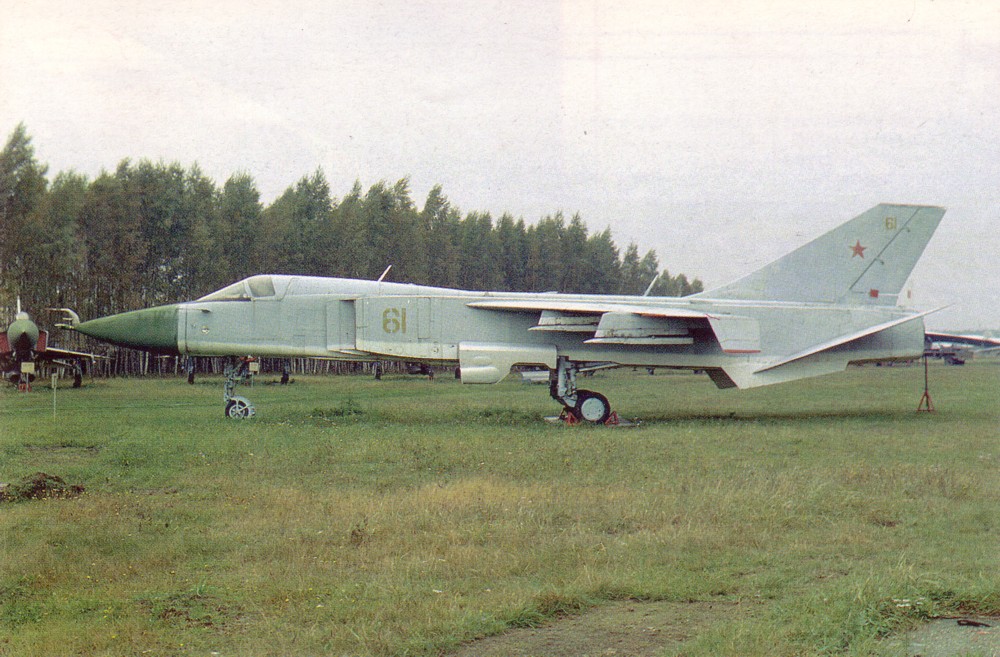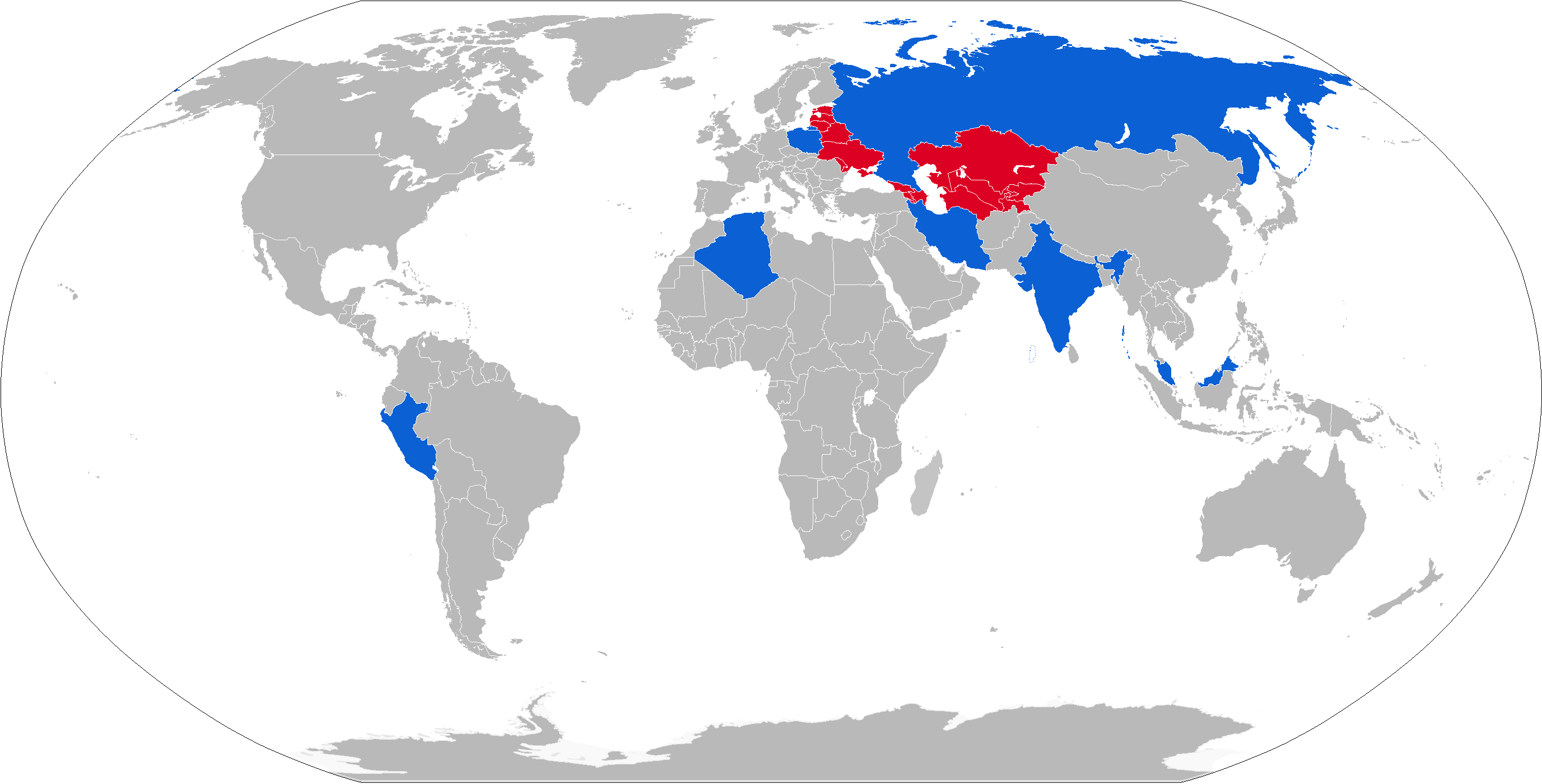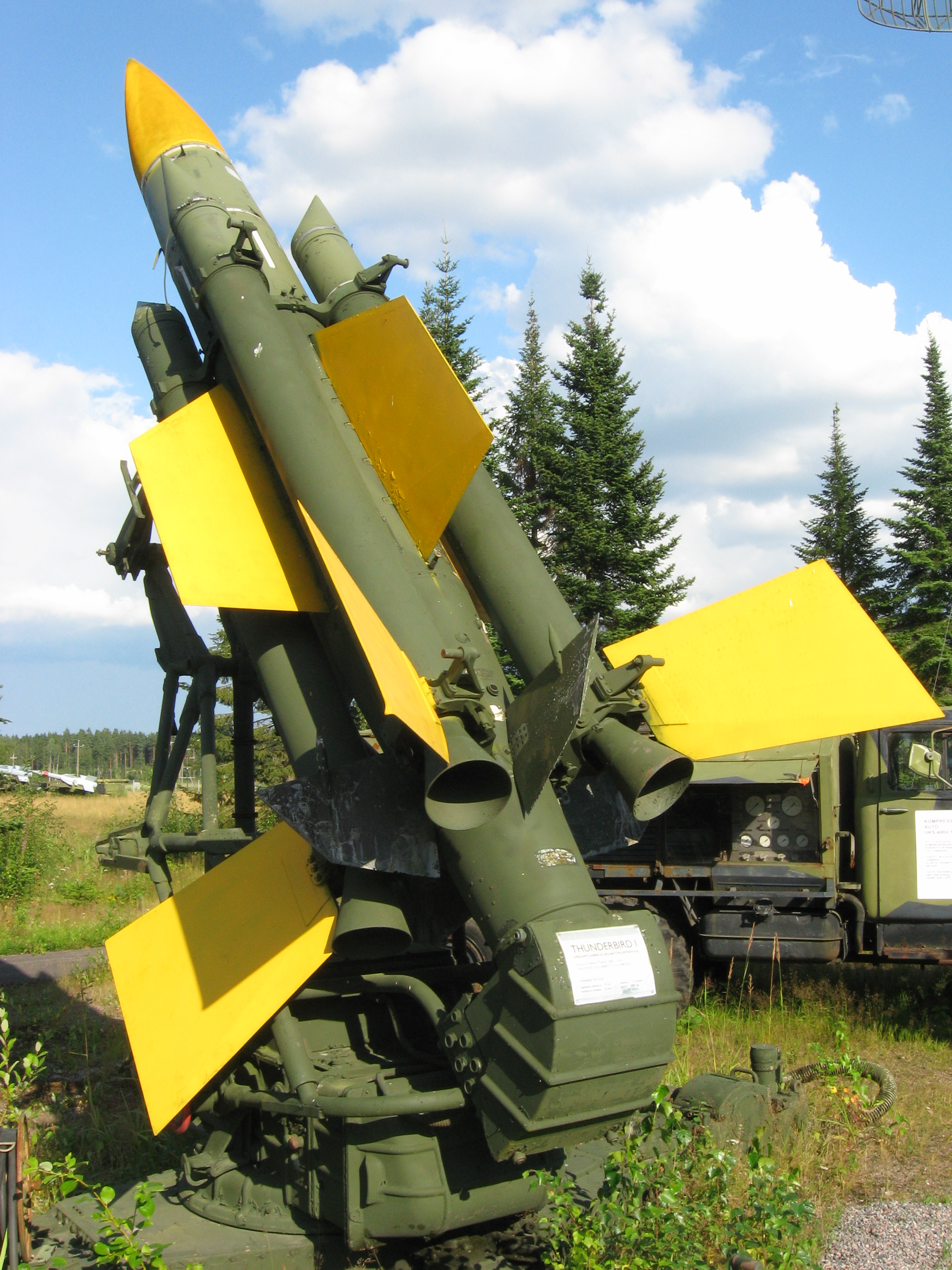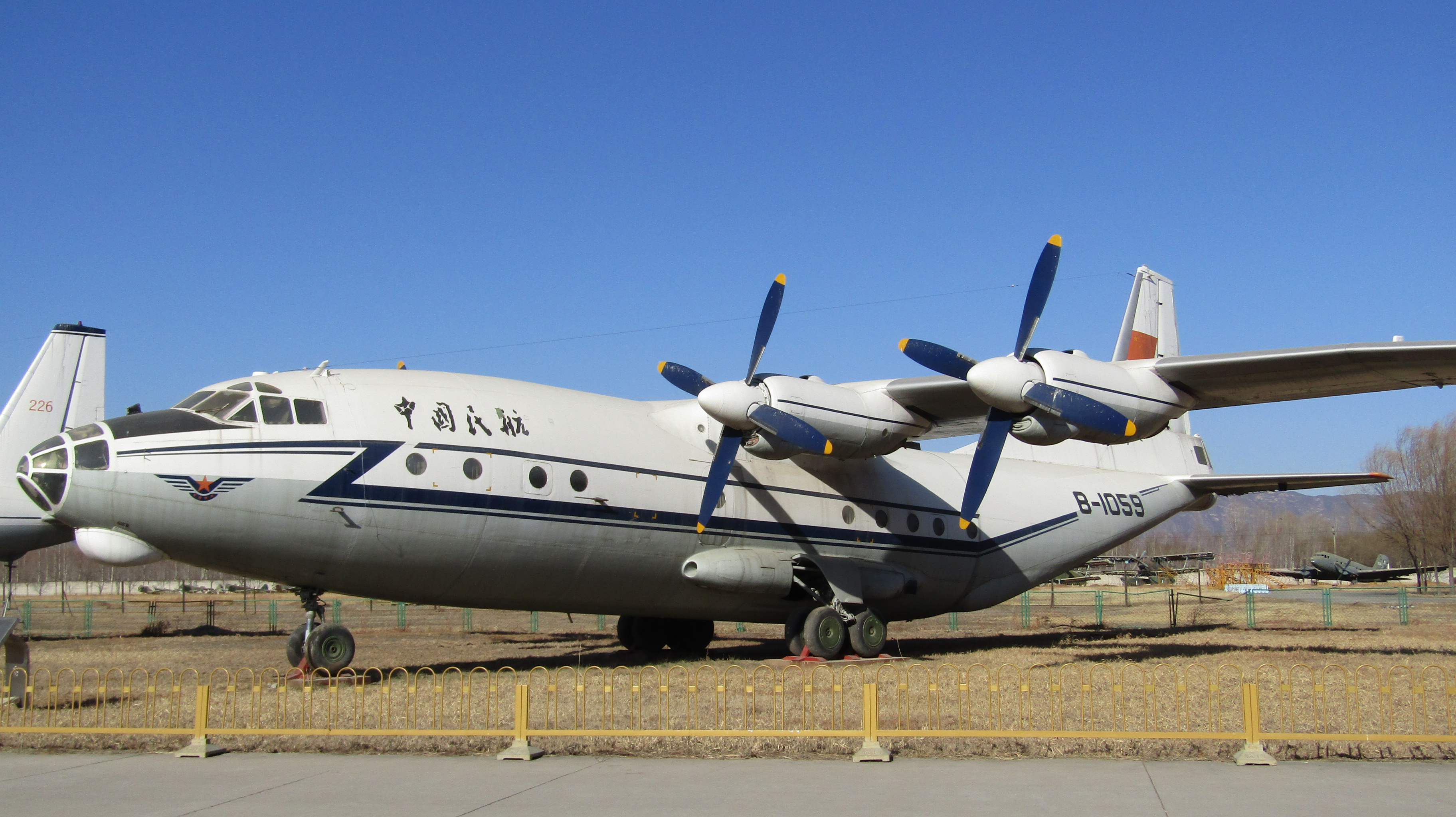|
Kh-28
The Kh-28 (; Nisan-28; NATO reporting name, NATO: AS-9 'Kyle') was the first Soviet Union, Soviet anti-radiation missile (ARM) for tactical aircraft. It entered production in 1973 and is still carried on some Sukhoi Su-22s in developing countries but is no longer in Russian service. Use of the Kh-28 was restricted by its weight, limited seeker head, bulk and fuelling requirements, and it was superseded by the smaller, solid-fuel Kh-58 (AS-11 'Kilter') in the early 1980s. Development Soviet offensive doctrine in the early 1960s assumed that widespread use of nuclear weapons would disable Western radar-based air defence systems through electromagnetic pulses (EMP) effects. Also available froAccessMyLibrary/ref> Consequently, they paid little attention to the development of ARMs. However, in January 1963 the Berezniak design bureau (which became MKB Raduga in 1967) was tasked with developing such a missile as part of the K-28P weapon complex based around a "Wild Weasel" version of th ... [...More Info...] [...Related Items...] OR: [Wikipedia] [Google] [Baidu] |
Sukhoi Su-22
The Sukhoi Su-17 (''izdeliye'' S-32; NATO reporting name: Fitter) is a variable-sweep wing fighter-bomber developed for the Soviet military. Developed from the Sukhoi Su-7, the Su-17 was the first variable-sweep wing aircraft to enter Soviet service and featured updated avionics. The aircraft also has variants which were designed to be exported to non-Soviet states such as the Sukhoi Su-22 and the less popular Su-20. It was produced from 1967 to 1990. The Su-17/20/22 series had a long career and has been operated by many air forces, including those of the Russian Federation, former Soviet republics, former Warsaw Pact, countries in the Arab world, Angola, and Peru. The Russian Federation retired its fleet in 1998. Although the Su-17 was capable of carrying nuclear weapons, it was used in roles ranging from close-air support to ground attack. Development Shortly after the Su-7 fighter-bomber was put into service, the Sukhoi Design Bureau was ordered to develop a modernizati ... [...More Info...] [...Related Items...] OR: [Wikipedia] [Google] [Baidu] |
Su-24
The Sukhoi Su-24 (NATO reporting name: Fencer) is a supersonic, night fighter, all-weather tactical bomber developed in the Soviet Union. The aircraft has a variable-sweep wing, Twinjet, twin engines and a side-by-side seating arrangement for its crew of two. It was the first of the USSR's aircraft to carry an integrated digital Nav/attack system, navigation/attack system. The Su-24 started development in the early 1960s and first flew in 1967. It entered service in 1974 and production ceased in 1993. It remains in service with the Russian Aerospace Forces, Syrian Air Force, Ukrainian Air Force, Algerian Air Force and various other air forces to which it was exported. Development Background One of the conditions for accepting the Sukhoi Su-7, Sukhoi Su-7B into service in 1961 was the requirement for Sukhoi to develop an all-weather variant capable of precision air strikes. Preliminary investigations with ''S-28'' and ''S-32'' aircraft revealed that the basic Su-7 design was to ... [...More Info...] [...Related Items...] OR: [Wikipedia] [Google] [Baidu] |
MKB Raduga
MKB Raduga (, meaning Raduga Design Bureau (), where ''raduga'' literally means "rainbow") is a Russian aerospace company, concerned with the production of various missile-systems and related technologies. It is headquartered in Dubna, Moscow Oblast. Formerly a division of the Mikoyan-Gurevich design bureau, it was spun off as a separate OKB (design bureau, ) in March 1957. History * October 1946 - OKB-2 * 12 October 1951 - division of OKB-155-1 (headed by Mikhail Gurevich) * March 1957 - Aleksandr Bereznyak became the chief designer * June 1965 - machine building design bureau "Raduga" * 19 June 1972 - Dubna production and development amalgamation "Raduga" * 7 September 1978 - Dubna production amalgamation "Raduga" * 12 May 1982 - machine building design bureau "Raduga" Products Kometa series * KS-1 Komet (AS-1 "Kennel") - the first Soviet air-launched anti-ship cruise missile, began development 1947 * K-10S (AS-2 "Kipper") - heavy anti-ship missile, Tu-16, 1955 Nava ... [...More Info...] [...Related Items...] OR: [Wikipedia] [Google] [Baidu] |
Kh-58
The Kh-58 (; NATO: AS-11 'Kilter') is a Soviet anti-radiation missile with a range of 120 km. the Kh-58U variant was still the primary anti-radiation missile of Russia and its allies. It is being superseded by the Kh-31. The NATO reporting name is "Kilter". Development The Bereznyak design bureau had developed the liquid-fuelled Kh-28 (AS-9 ‘Kyle’) and the KSR-5P (AS-6) anti-radiation missiles. They merged with Raduga in 1967, so Raduga was given the contract in the early 1970s to develop a solid-fuel successor to the Kh-28 to equip the new Su-24M 'Fencer-D' attack aircraft. Consequently, the project was initially designated the Kh-24, before becoming the Kh-58. During the 1980s a longer-range variant was developed, the Kh-58U, with lock-on-after-launch capability. Since the fall of the Soviet Union, Raduga have offered several versions for export. Design It was designed to be used in conjunction with the Su-24's L-086A "Fantasmagoria A" or L-086B "Fantasmagoria B" ta ... [...More Info...] [...Related Items...] OR: [Wikipedia] [Google] [Baidu] |
English Electric Thunderbird
The English Electric Thunderbird was a British surface-to-air missile produced for the British Army. Thunderbird was primarily intended to attack higher altitude targets at ranges up to approximately , providing wide-area air defence for the Army in the field. Anti-aircraft guns were still used for lower altitude threats. Thunderbird entered service in 1959 and underwent a major mid-life upgrade to Thunderbird 2 in 1966, before being slowly phased out by 1977. Ex-Army Thunderbirds were also operated by the Royal Saudi Air Force after 1967. Thunderbird had performance similar to other semi-portable missiles like the US MIM-23 Hawk and fully mobile Soviet 2K11 Krug, although it pre-dates both of these systems. After its mid-life upgrades, which shared several components with the RAF's Bristol Bloodhound, Thunderbird featured a continuous-wave radar semi-active homing system that was highly resistant to radar jamming and deception, and was able to track targets even at very low al ... [...More Info...] [...Related Items...] OR: [Wikipedia] [Google] [Baidu] |
MIM-23 Hawk
The Raytheon MIM-23 HAWK ("Homing All the Way Killer") is an American medium-range surface-to-air missile. It was designed to be a much more mobile counterpart to the MIM-14 Nike Hercules, trading off range and altitude capability for a much smaller size and weight. Its low-level performance was greatly improved over Nike through the adoption of new radars and a continuous wave semi-active radar homing guidance system. It entered service with the US Army in 1959. In 1971 it underwent a major improvement program as the Improved Hawk, or I-Hawk, which made several improvements to the missile and replaced all of the radar systems with new models. Improvements continued throughout the next twenty years, adding improved electronic counter-countermeasures, ECCM, a potential home-on-jam feature, and in 1995, a new warhead that made it capable against short-range tactical ballistic missiles. ''Jane's Information Group, Jane's'' reported that the original system's single shot kill probab ... [...More Info...] [...Related Items...] OR: [Wikipedia] [Google] [Baidu] |
Fire-control Radar
A fire-control radar (FCR) is a radar that is designed specifically to provide information (mainly target azimuth, elevation, range and range rate) to a fire-control system in order to direct weapons such that they hit a target. They are sometimes known as narrow beam radars, targeting radars, tracking radars, or in the UK, gun-laying radars. If the radar is used to guide a missile, it is often known as a target illuminator or illuminator radar. A typical fire-control radar emits a narrow, intense beam of radio waves to ensure accurate tracking information and to minimize the chance of losing track of the target. This makes them less suitable for initial detection of the target, and FCRs are often partnered with a medium-range search radar to fill this role. In British terminology, these medium-range systems were known as tactical control radars. Most modern radars have a track-while-scan capability, enabling them to function simultaneously as both fire-control radar and se ... [...More Info...] [...Related Items...] OR: [Wikipedia] [Google] [Baidu] |
Target Acquisition
Target acquisition is the detection and identification of the location of a target in sufficient detail to permit the effective employment of lethal and non-lethal means. The term is used for a broad area of applications. A "target" here is an entity or object considered for possible engagement or other action (see Targeting). Targets include a wide array of resources that an enemy commander can use to conduct operations including mobile and stationary units, forces, equipment, capabilities, facilities, persons and functions. It may comprise target acquisition, Joint Targeting or Information Operations. Technically target acquisition may just denote the process of a weapon system to decide which object to lock on to, as opposed to surveillance on one and target tracking on the other side; for example in an anti-aircraft system. History Target acquisition under the doctrines of the Cold War The Cold War was a period of global Geopolitics, geopolitical rivalry betwe ... [...More Info...] [...Related Items...] OR: [Wikipedia] [Google] [Baidu] |
Antonov An-12
The Antonov An-12 ( Russian: Антонов Ан-12; NATO reporting name: Cub) is a four-engined turboprop transport aircraft designed in the Soviet Union. It is the military version of the Antonov An-10 and has many variants. For more than three decades, the An-12 was the standard medium-range cargo and paratroop transport aircraft of the Soviet air forces. A total of 1,248 aircraft were built. Design and development Developed from the Antonov An-8, the An-12 was a military version of the An-10 passenger transport. The first prototype An-12 flew in December 1957 and entered Soviet military service in 1959. Initially, the aircraft was produced at the State Aviation Factory in Irkutsk, Siberia. From 1962, production was transferred to Tashkent, where 830 were built. Later, production moved to Voronezh and Kazan. In military use, the An-12 has capacity for up to 100 fully equipped paratroopers or of cargo, which is loaded through the rear loading ramp/door. In terms of conf ... [...More Info...] [...Related Items...] OR: [Wikipedia] [Google] [Baidu] |
Red Fuming Nitric Acid
Red fuming nitric acid (RFNA) is a storable oxidizer used as a rocket propellant. It consists of nitric acid (), dinitrogen tetroxide () and a small amount of water. The color of red fuming nitric acid is due to the dinitrogen tetroxide, which breaks down partially to form nitrogen dioxide. The nitrogen dioxide dissolves until the liquid is saturated, and produces toxic fumes with a suffocating odor. RFNA increases the flammability of combustible materials and is highly exothermic when reacting with water. Since nitrogen dioxide is a product of decomposition of nitric acid, its addition stabilizes nitric acid in accordance with Le Chatelier's principle. Addition of dinitrogen tetroxide also increases oxidizing power and lowers the freezing point. It is usually used with an inhibitor (with various, sometimes secret, substances, including hydrogen fluoride; any such combination is called ''inhibited RFNA'', ''IRFNA'') because nitric acid attacks most container materials. Hydrogen ... [...More Info...] [...Related Items...] OR: [Wikipedia] [Google] [Baidu] |
KSR-5
The KSR-5, also designated as the Kh-26 (NATO reporting name AS-6 Kingfish) was a long-range, air-launched cruise missile and anti-ship missile developed by the Soviet Union. It was essentially a scaled down version of the Kh-22 'Kitchen', primarily carried by the Tupolev Tu-16 bomber. Background In the early 1960s the development of new nuclear-capable strategic bombers came into a virtual halt in the Soviet Union, with the focus being shifted on nuclear ballistic missiles and developing cruise missiles for existing aircraft. Developments in jet fighters and surface-to-air missiles during the 1950s made the use of nuclear free-fall bombs impractical against densely protected targets while missiles gave bombers the possibility of striking targets beyond the range of enemy anti-aircraft weapons. Description Developed in the late 1960s, the KRS-5 (also designated as the Kh-26) is an improved version of the Kh-22 missile, designed to be smaller, lighter and with a smalle ... [...More Info...] [...Related Items...] OR: [Wikipedia] [Google] [Baidu] |
SEAD
Suppression of Enemy Air Defenses (SEAD ), also known in the United States as "Wild Weasel" and (initially) "Iron Hand" operations, are military actions to suppress enemy surface-based air defenses, including surface-to-air missiles (SAMs), anti-aircraft artillery (AAA), and related systems such as early-warning radar and command, control and communication functions. Suppression can be accomplished by physically destroying the systems or by disrupting and deceiving them through electronic warfare. In modern warfare, SEAD missions can constitute up to 30% of sorties launched in the first week of combat and continue at a reduced rate through the rest of a campaign.Tucker, Spencer C. (Editor), ''The Encyclopedia of Middle East Wars: The United States in the Persian Gulf, Afghanistan, and Iraq Conflicts'', ABC-CLIO, 2010, pp. 61–62. One-quarter of American combat sorties in recent conflicts have been SEAD missions. They are generally associated with aircraft, but may be perform ... [...More Info...] [...Related Items...] OR: [Wikipedia] [Google] [Baidu] |










